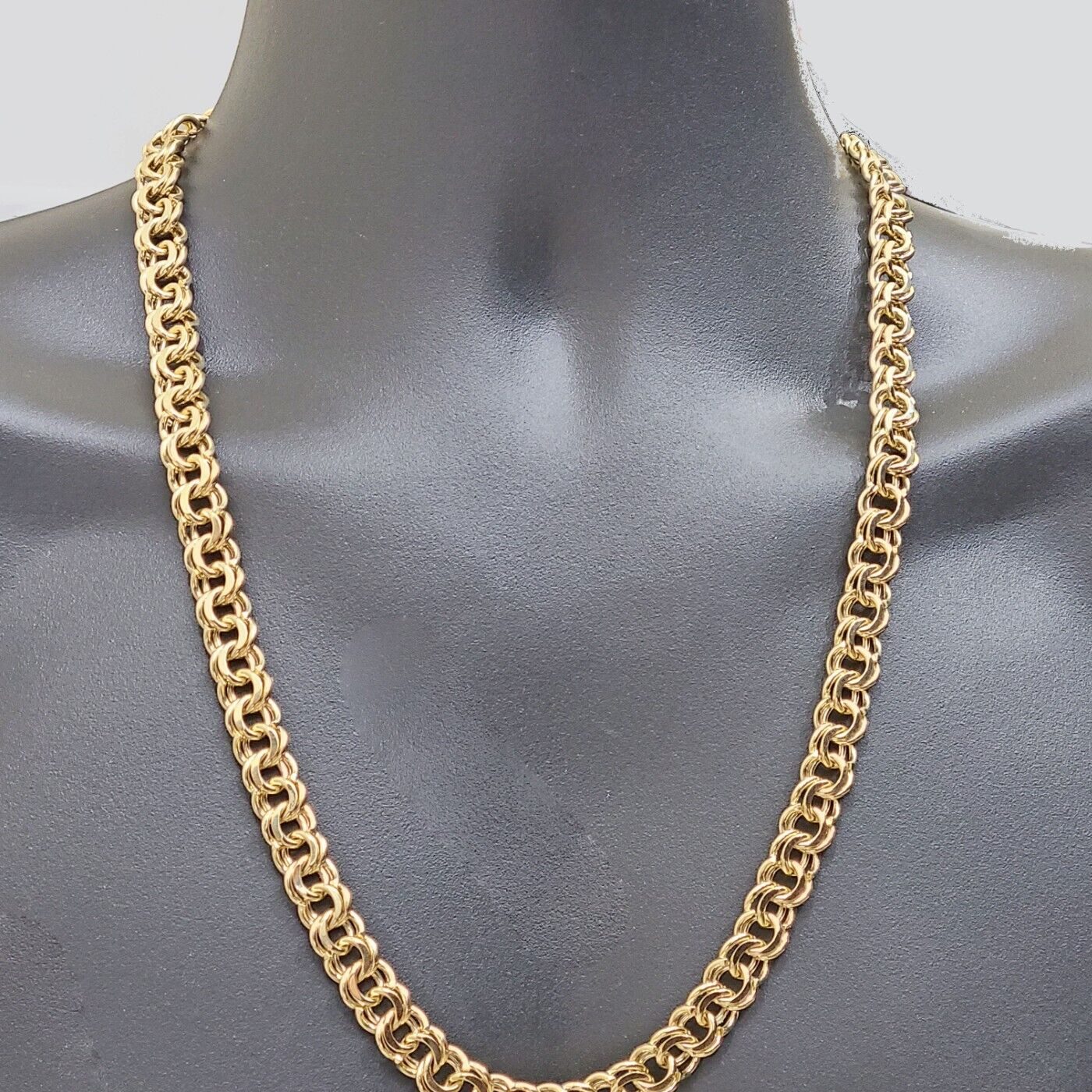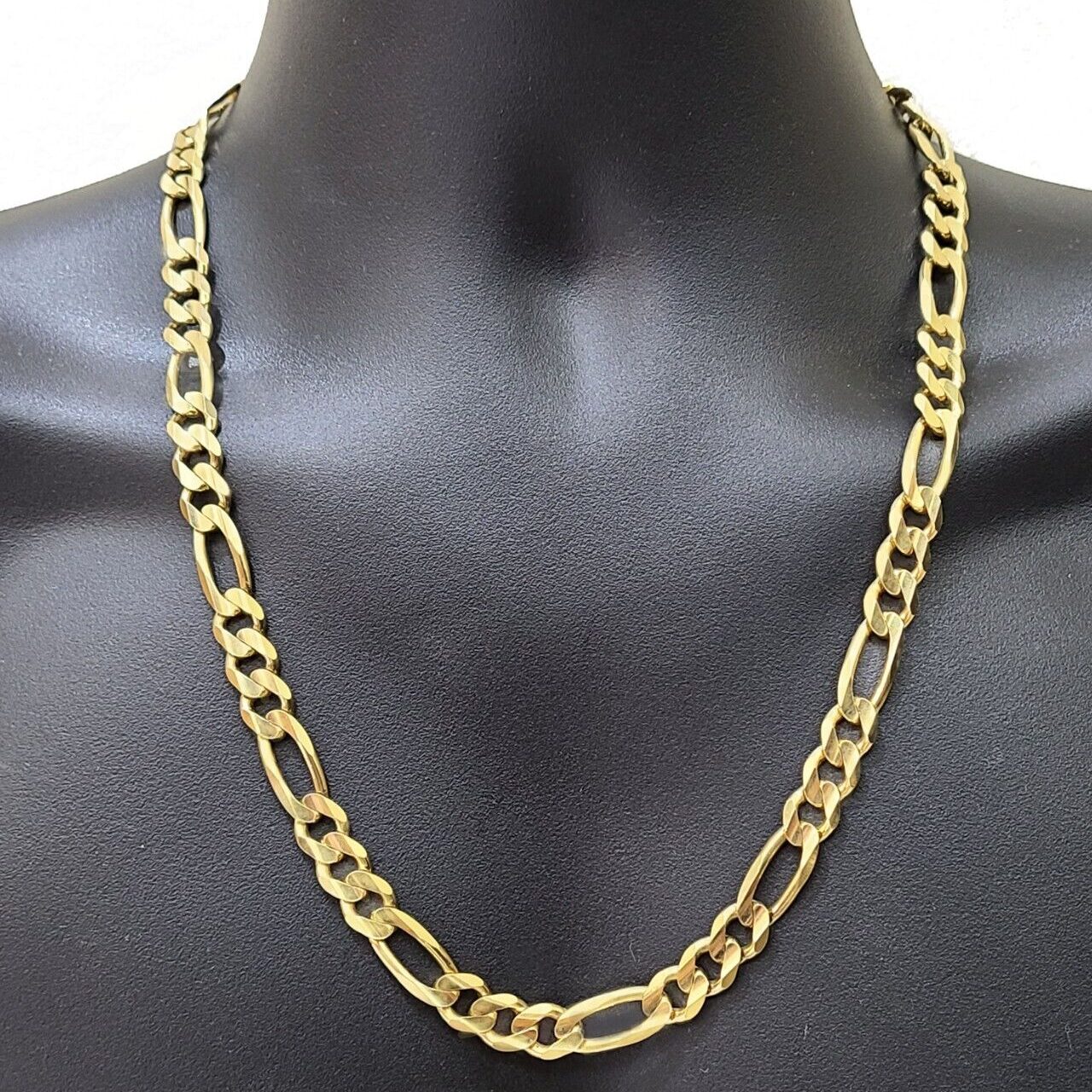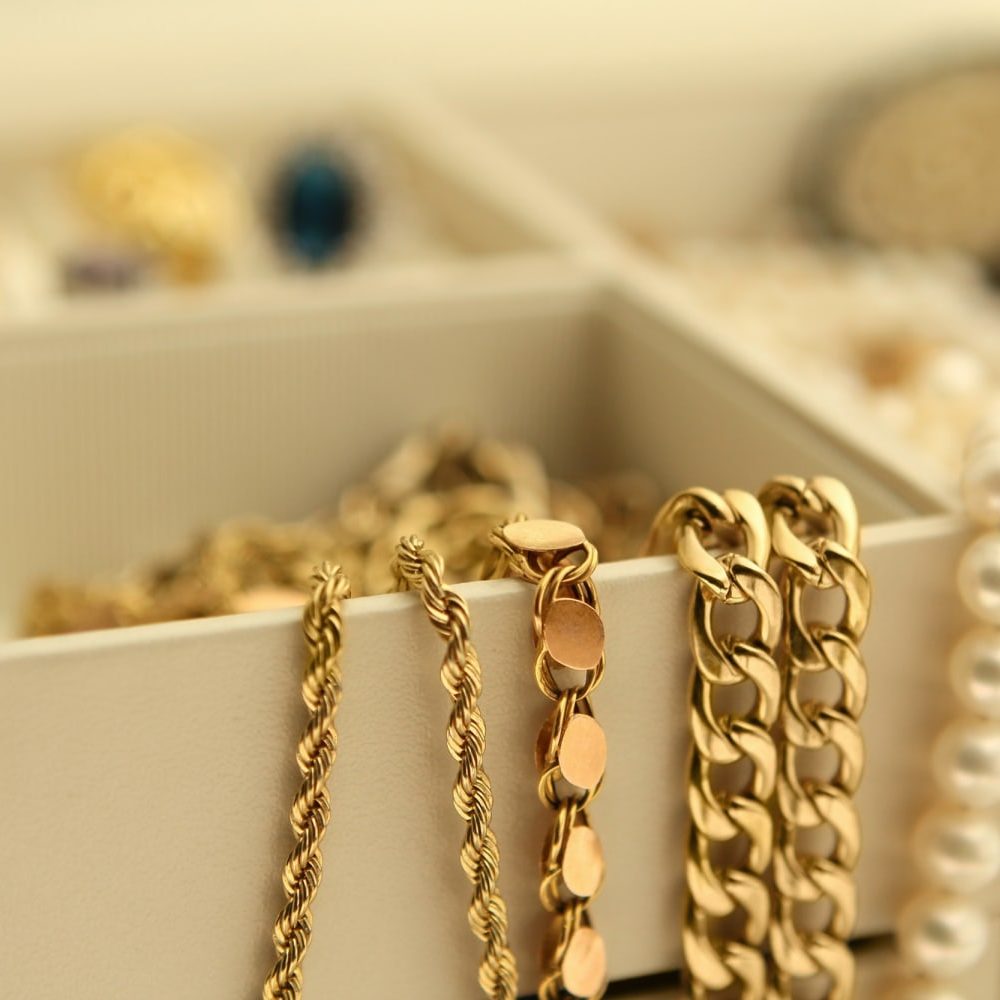The Importance of Verifying Gold Authenticity
Gold chains have adorned necks for centuries, symbolizing wealth, status, and style. The allure of gold jewelry continues to captivate people worldwide. However, the market floods with imitations and fake gold products. Knowing how to distinguish real gold from counterfeit pieces becomes crucial for consumers. This guide explores various methods to verify the authenticity of gold chains. These techniques range from simple at-home tests to professional evaluations. How to tell if a gold chain is real?Understanding these methods helps protect investments and ensures the purchase of genuine gold jewelry.
Visual Inspection: The First Line of Defense
A careful visual examination serves as the initial step in authenticating a gold chain. Real gold possesses a rich, warm color that fake gold struggles to replicate perfectly. Genuine gold chains maintain a consistent color throughout the piece. Look for any signs of discoloration or fading, which often indicate plated or fake gold. Examine the chain links closely for any irregularities or rough spots. Authentic gold chains typically feature smooth, even surfaces. Check for any green or black discoloration on the skin after wearing the chain. These marks often suggest the presence of non-gold metals. While visual inspection alone cannot guarantee authenticity, it provides valuable initial insights.
Understanding Gold Markings and Hallmarks
Legitimate gold jewelry often bears specific markings indicating its purity. These markings, known as hallmarks, provide crucial information about the gold content. Common gold purity markings include 10K, 14K, 18K, or 24K. Some pieces may use three-digit numbers like 585 (14K) or 750 (18K) to denote gold content. Look for these markings on the clasp or a small tag attached to the chain. Authentic hallmarks appear clear and well-defined, not smudged or irregular. Some countries require additional hallmarks indicating the manufacturer or year of production. Familiarize yourself with these markings to better assess gold authenticity. Be cautious of chains lacking any markings, as this often suggests non-gold materials.
Examining the Hallmark:
- Look for Hallmark Stamp: Authentic gold jewelry typically bears a hallmark, which indicates the purity of the gold and authenticity. Look for stamps such as “10K,” “14K,” “18K,” or “24K” on the chain. These numbers represent the gold’s karatage level.
- Verify Hallmark Quality: Inspect the hallmark for clarity, precision, and legibility. Genuine gold chains will have a clear and distinct hallmark stamp, indicating the manufacturer’s compliance with industry standards.
Testing for Purity:
- Acid Testing: Acid testing is a commonly used method to verify the purity of gold. A small scratch is made on an inconspicuous part of the 10k gold rope chain, and a drop of acid corresponding to the gold’s purity is applied. Observe the reaction of the acid to determine if the chain matches the expected purity.
- Magnet Test: Gold is not magnetic, so using a magnet to test the chain’s reaction can help detect counterfeit gold chains. If the chain is attracted to the magnet, it is likely not real gold.
- Nitric Acid Test: Nitric acid testing involves applying a drop of nitric acid to a small area of the chain. If the area turns green, it indicates the presence of other metals, such as copper or nickel, in the alloy. Real gold will remain unreactive.
Assessing Weight and Density:
- Compare Weight to Size: Genuine gold is dense and heavy, so comparing the weight of a gold chain to its size can provide a rough indication of its authenticity. Counterfeit chains made from other metals will typically be lighter for their size.
- Perform a Sound Test: Gently tap the chain against your teeth or another metal object. Real gold produces a soft, mellow sound, while counterfeit chains made from lighter materials may produce a hollow or high-pitched sound.
Seek Professional Appraisal:
- Consult a Professional Jeweler: For a definitive assessment, consult a certified and reputable jeweler or appraiser. These professionals have the expertise and equipment to determine the authenticity and value of gold chains accurately.
- XRF Testing: X-ray fluorescence (XRF) testing is a non-destructive method used by professionals to determine the composition and purity of gold. XRF machines analyze the elemental composition of the metal, providing accurate information about its quality.
Additional Considerations:
- Look for Wear and Tear: Genuine rose gold chain will not tarnish or rust, even with prolonged wear. Counterfeit chains may show signs of wear, such as discoloration, flaking, or fading of the gold plating.
- Seek Reputable Sources: Purchase gold chains from reputable jewelers or retailers who guarantee the authenticity of their products. Always request proper documentation and certifications to accompany your purchase.
How to match gold chains
Gold chains are versatile and timeless accessories that can elevate and enhance any outfit. Whether you prefer a minimal and understated look or want to make a bold fashion statement, there are various ways to style and pair gold chains for different occasions.
Consider Chain Length and Thickness:
- Short and Delicate Chains: Shorter and delicate gold chains, such as chokers or princess-length chains, are perfect for minimalistic and casual looks. They pair well with open necklines, V-neck tops, or crewneck T-shirts, adding a touch of elegance.
- Medium-Length Chains: Medium-length gold chains, such as matinee or collar-length, are versatile and suitable for various occasions. They can be worn as standalone pieces or layered with shorter or longer chains for a trendy look.
- Long and Statement Chains: Longer gold chains, such as opera or rope styles, create a bold and statement-making appearance. They work well with deep necklines, dresses, or as an accent piece over a blouse or turtleneck.
Layering and Mixing Chain Styles:
- Mixing Metals: Don’t be afraid to mix gold filled chain with other metals, such as silver or rose gold. Experiment with different color combinations to create a unique and eclectic look. Consider layering chains of various metals and lengths for added visual interest.
- Varying Textures and Styles: Create dimension by layering gold chains of different textures, such as delicate chains, box chains, or chains with unique designs. Mixing various chain styles adds depth and complexity to your look.
- Pendant Layering: Add depth and personalization by layering a gold chain with pendants of different lengths and styles. Combine a simple pendant with a bold statement piece or layer multiple delicate pendants on one chain for an eclectic look.
Coordination with Outfits:
- Casual Daytime Looks: Pair a short or medium-length gold chain with a white T-shirt, jeans, and sneakers for a cool and effortless everyday look. Opt for delicate and dainty chains to keep the focus on the ensemble.
- Elegant Evening Attire: Enhance an elegant evening look by layering long gold chains with a structured dress or gown. Experiment with pendant styles, such as gemstone or diamond accents, to add glamour and sophistication.
- Professional and Office Wear: Choose a medium-length gold chain with a simple pendant or a classic chain for a polished and professional look. Pair it with tailored blouses, blazers, or dresses to add a touch of elegance to your office attire.
Personal Expression and Symbolism:
- Meaningful Pendants: Select pendants that hold personal meaning or represent your values. Opt for symbols, such as hearts, crosses, or zodiac signs, that resonate with you and reflect your personality or beliefs.
- Birthstones and Initials: Incorporate your birthstone or initial pendant into your gold chain collection to add a personal touch. These can be cherished gifts or represent special milestones in your life.
- Customization and Layering: Have fun customizing your gold chains with pendants or lockets containing photographs, special messages, or engraved initials. Layer these customized chains with other pieces for a unique and sentimental touch.
Identifying Common Gold Imitations
Awareness of common gold imitations improves authenticity assessment skills. Gold-plated jewelry features a thin layer of gold over a base metal. This plating can wear off over time, revealing the underlying material. Gold-filled items have a thicker gold layer but still contain significant amounts of non-gold metals. Brass and bronze often masquerade as gold due to their similar color. Some alloys, like pinchbeck, were specifically created to imitate gold’s appearance. Modern materials like gold-tone stainless steel can closely resemble genuine gold. Familiarizing yourself with these imitations helps in spotting potential fakes. Many of the tests described earlier can help distinguish these imitations from real gold.
Conclusion:
Identifying real gold chains is crucial to ensure accurate valuation, investing in genuine jewelry, and avoiding counterfeit items. By carefully examining the hallmark, testing for purity using methods such as acid testing or the magnet test, assessing weight and density, and seeking professional appraisal when necessary, you can confidently differentiate between real gold chains and imitations. Remember, seeking reputable sources and professional assistance, while understanding the characteristics of genuine gold, will help you make informed decisions and ensure the authenticity of your gold chain purchases.




